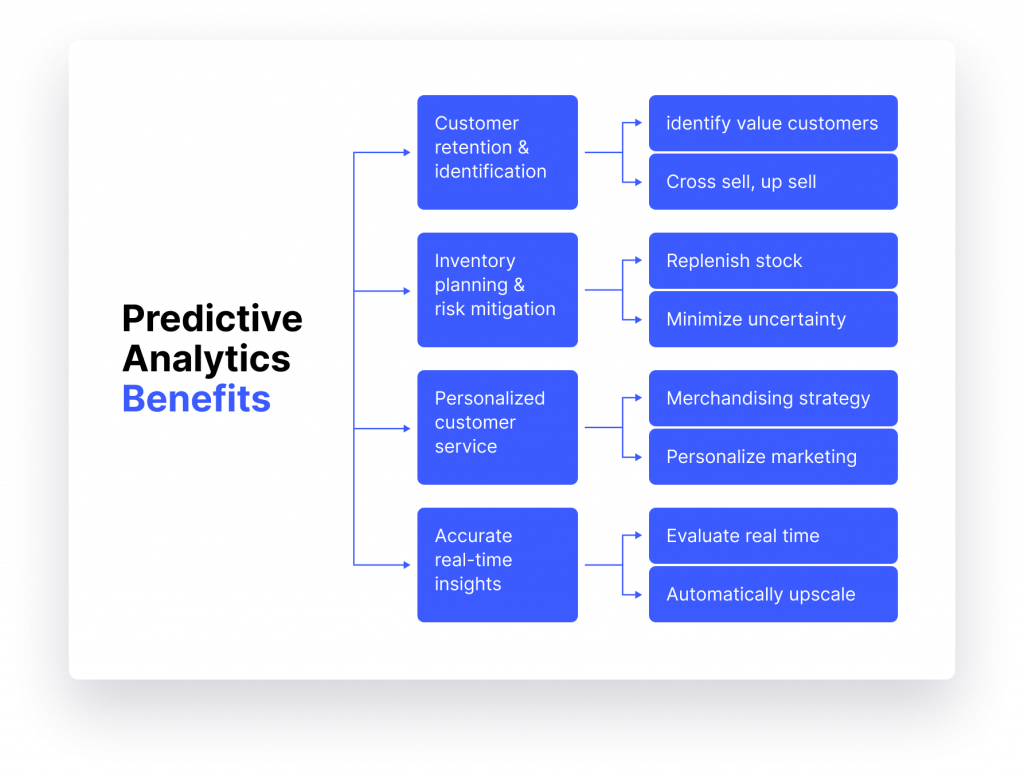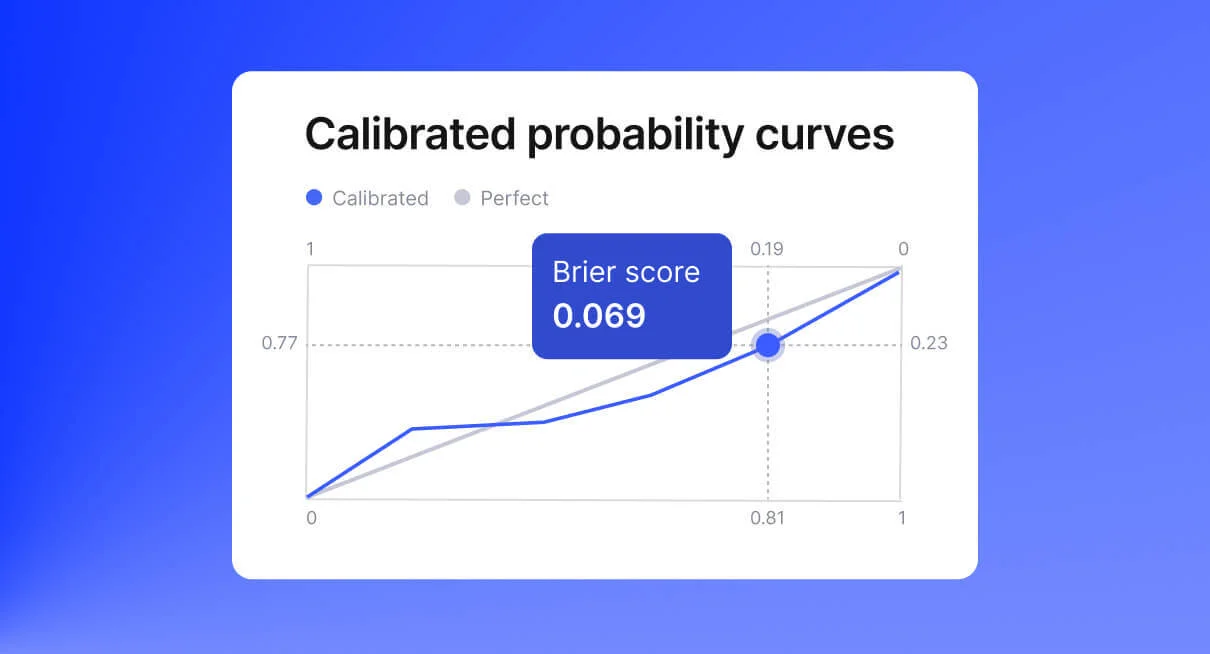7 Ways You Could Be Using Predictive Analytics in Retail

McKinsey calls technological transformation in retail imperative. EY says it empowers customers to take control of their shopping experience. Meanwhile, Gartner notes that “e-commerce is no longer a differentiator”—just taking your business online isn’t cutting it anymore.
Instead, consumers expect more. Commerce is no longer a need. It should be an experience and a personalized one at that. Nowadays, companies are choosing innovative technologies that predict, meet, and exceed client needs. One of these is predictive analytics in retail—a technology that allows retailers to anticipate customer needs, optimize pricing, personalize marketing, improve operations, reduce risk, and more, resulting in (ideally) a boost in sales and consumer loyalty.
What is predictive analytics in the retail industry?
Predictive analytics as a technology utilizes past and current events and data to forecast (predict) potential outcomes and their likelihood. Far from digital fortune tellers, such technologies are honed using artificial intelligence (AI) and machine learning (ML) technology, making them more effective.
Predictive analytics for retail are tailored analytics solutions for the commerce sector. They draw on data, analyze it, build predictive models, and employ these to make decisions and aid decision-makers in their processes.
What are the predictive analytics use cases in retail?
AI predictive analytics for retail is not a one-trick pony. It has a variety of solutions for all business needs. Let’s take a look at the top seven uses of predictive analytics in retail and how you can engage them.
No. 1. Forecasting demand. Drawing on historical sales data, trends, and more. Predictive analytics in retail helps businesses to optimize inventory, reduce stockouts and overstocking scenarios, and advance their supply chain management, leading to a smoother process overall.
No. 2. Customer segmentation. With demographics, user behaviors, and additional key factors leading analytics, this technology can aid marketers in creating targeted campaigns and help personalize the retail experience, and boost consumer delight in the end result.
No. 3. Personalized product recommendations. Personalization is here to stay, and predictive analytics in the retail industry can help brands target their customers based on past purchases, browsing behavior, and other data, driving sales and loyalty, and leading to improved customer service strategy.
No. 4. Inventory management. Commerce is a business of supply and demand. Predictive analytics can help forecast demand and identify slow-moving or unneeded inventory, reducing business costs and optimizing efficiency.
No. 5. Fraud detection and prevention. AI predictive analytics for retail can help spot suspicious transactions or unvalidated data, alerting the business faster than before and reducing instances of fraud, and loss as much as possible.
No. 6. Pricing optimization. Ensuring a business remains competitive with optimized pricing strategies that allow your company to offer the best rates while turning a profit. Analyze competitor pricing, customer behavior, and other factors quicker than ever before.
No. 7. Supply chain management. Forecast supply and demand, identify supply chain bottlenecks, and improve inventory availability without overstocking. Reduce the risk of falling victim to circumstances, such as legal restrictions or pandemics, and ensure customer satisfaction with a proactive approach.

How does predictive analytics in retail work?
Now that we know the benefits and use cases, let’s explore how predictive analytics in the retail industry actually operates. To do so, we’ll use a generalized retail predictive analytics case study.
Step 1—data gathering
Using point-of-sale systems, customer databases, and other sources, collect relevant data on historical sales, consumer behavior, and additional retail data. This first step will allow you to gather an informative database for future steps.
Step 2—clean and prepare your data
Reducing the number of data errors, repetitions, and unhelpful data improves its usefulness. Once your data is cleaned, it can then be used for further analysis. Missing out on this step risks incorrect predictions or time lost.
Step 3—analyze your data
AI predictive analytics for retail and machine learning algorithms can help you to identify patterns and trends within the cleaned data set. This involves a number of different analysis types, such as series analysis, regression analysis, and more.
Step 4—build a predictive model
Now that you’ve analyzed your data, it’s time to draw upon it to develop a predictive model that will help you establish insights. These can include seasonality, promotion effects, consumer data, behavior, and other statistics.
Step 5—evaluate and refine the model
No model is perfect from the get-go, as much as we would like it to be. The beauty of AI predictive analytics for retail is that it keeps evolving. The models draw on past data and integrate it with the system to ensure the model’s performance improves over time. Additional, manual interaction may be necessary for adjustments as well, depending on the specific case.
Step 6—deploy the model and use it to make predictions
Depending on your particular retail predictive analytics case study, you may choose to utilize this model to predict pricing, inventory, demand, supply, and more, allowing you to optimize your business. In addition, it also empowers decision-making based on coherent statistical data, helping all levels of the team from the top down.
Predictive analytics in retail—too complicated? Let us help
You want better customer loyalty. You need optimized business processes. You’ve been puzzled at how to get the best pricing strategy that benefits you and your clients. Predictive analytics in the retail industry could be the solution you’ve been looking for. Although all that data can seem overwhelming at first, getting in touch with professionals that can talk you through it is as easy as one, two, three. Get in touch with the GiniMachine team to discover the power of prediction and never look back.



